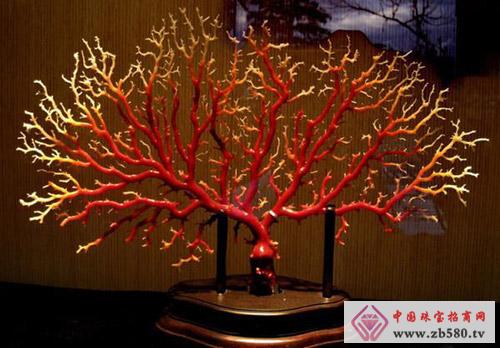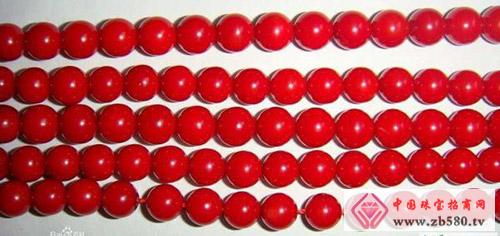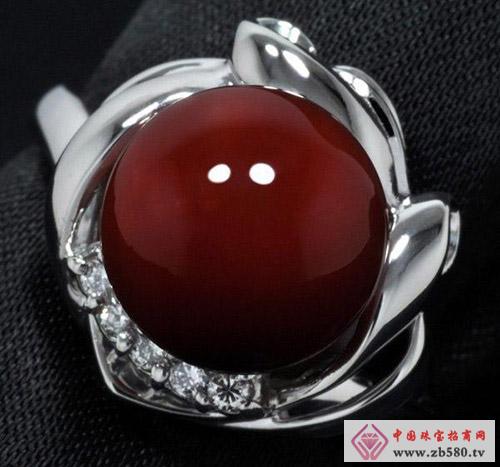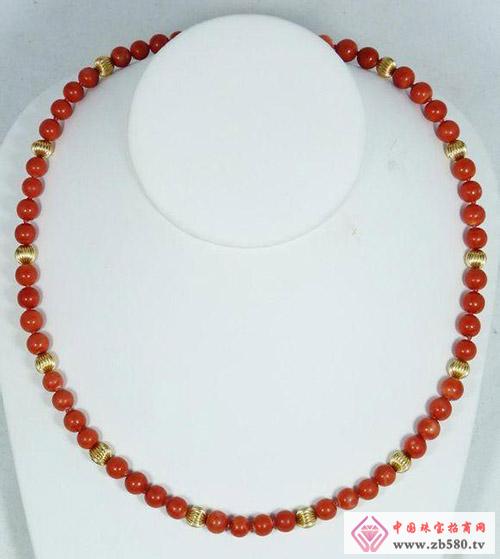.jpg)
Look at the picture more intuitively - red coral knowledge popularization
In ancient China, red coral was regarded as auspicious and happy, so it was also called "Ruibao". The famous coral connoisseur said on the weekend: "Coral, the elf of the sea." The Indians believe: "The precious coral is the mother of the earth." Japan also regards red coral as its quintessence.
In ancient and modern China and abroad, red corals have a lofty status. The caps and pilgrimages worn by the Qing Dynasty's second-class officials were made of precious red corals; the Tibetan lamas sorghums were mostly rosary made of red corals. The precious red corals are now rare and hard to come by, especially coral trees up to two feet tall. The rare and non-renewable nature of coral makes it highly collectible, and natural red coral jewelry is more and more popular among people.

At present, due to over-exploitation, the growth rate of corals is far behind the speed of mining, and the scarcity of production has led to a rise in the price of good red corals on the market. The whole red coral tree has been seen for a few years before, and now it is impossible to meet. The color is good, the carving is fine, and the ornaments of some vintages will only appear in the art auction. Some high-quality red coral ring faces are valuable even though the particles are not large.
Like the entire art market, red corals are also plagued by counterfeits. How to distinguish between true and false red corals?
Really red coral has a natural texture, very moist and has small white spots and small black spots buried in red. Among the ornaments, there are sea willows, sea bamboos, etc., which are faked with materials such as dyed marble, pink glass and pink plastic.
The most easy to use fake coral is called "beauty coral", this red coral is half-truth, a bit like B and C in jade. It is made of high-quality white coral in shallow water and wrapped with special coatings and coral powder. The red corals are naturally resembled as small white spots and small black spots. The most precious red corals and peach corals can sometimes be used. To achieve the degree of realism, the average consumer is difficult to distinguish. The light color is dyed dark red and the grade is raised. This stained coral is harder to distinguish.
The quality grade of red coral is best in red, the color is pure and uniform; the weight, size or block size is precious; the texture is the best, the porous is the second; the carving is fine, the rough is the second. In general, red corals have several counterfeit imitations:
(1) False corals are counterfeited with sea willow, sea bamboo, etc., with obvious loose vertical texture structure, uniform color, but the color is dull, easy to fade, darken.
.jpg)
Sea willow
.jpg)
Sea bamboo
Sea bamboo is also a kind of coral, just shallow sea, the world is everywhere. The sea bamboo is white, and its appearance is one section. It looks like bamboo. It usually has a very thick radioactive texture, and the poor quality will have black dirty objects embedded in it.

Dyed sea bamboo
(2) Filling. Synthetic and imitation coral features: no natural texture structure, uniform color, fragile and easy to fade, relative density is less than red coral.
(3) Dyed plastic, marble, red glass. These materials have no texture, only red granular structure, and do not reflect with acid, often have gaseous inclusions, easy to fade, no fluorescence.
(4) Bone products, dyed with products such as cattle, camels, elephant bones, etc., which are different in appearance and will fade. The bone product has a hole-like structure, and the structure is rough, the sound of the coral is crisp, the bones are indulged; the coral is brittle, the fracture is flat and the bone product is tough and not easy to break, and the fracture is jagged.
(5) All textile products are made of toxic and harmful chemicals, and their toxic and side effects will inevitably affect the human body, and the majority of coral lovers will be far away.
There are three types of real gem-quality red corals: Aka Red (produced in Japan, Taiwan is less), Momo (Peach Red, from Taiwan), and Sardin (produced in the Mediterranean, Italy).

Natural best Aka red coral

Momo coral

Sardinian coral
Since the jewellery on the market mainly sells diamond jewelry and colorful treasure series, there are many misunderstandings about red coral:
First, the real red coral is no white core
Wrong: Aka red corals have white cores, so Aka red corals will only be made into egg noodles, and spherical surfaces, used to set rings and make pendants, or inlaid with original branches, generally will not be made into beads.
Second, the corals with growth patterns are red corals, and the corals without lines are not red corals.
Wrong: Red corals stained with sea bamboo also have growth patterns. Unlike red corals, the patterns of sea bamboo are very thick and sparse. It is easy to see the radiation pattern. At this point, consumers may be misled by illegal businessmen, saying " Red corals are grainy, and you see more." On the contrary, the red sand texture of sardine is hard to observe with the naked eye.
Third, red corals are red
Wrong: Red coral is a species. Red corals are red when they are absorbed. If nothing happens, it is white. White coral is very rare, and it is rare on the market.
4. The surface of the coral stained with alcohol will fade.
Wrong: I don't know how many people to mislead. Some people tried to dye the red coral with alcohol and did not fade one day and night, and opened the fake coral, which is also red, showing how good the dyeing technology is now.
The following points are the aspects that we need to pay attention to when purchasing red corals:
The real red coral pendants are hand-carved and crafted. For fake red corals, it is not cost-effective to engraver the master, so the fake red coral pendants are relatively small, and the fake ones are usually beads.
The price of red coral is actually more transparent, the heavier and more expensive, the Aka red is between 500-4000 yuan / gram, generally Momo is 250-500 / gram, the sardine is 200-300 / gram, the bigger the more expensive. If the price is much lower than the above reference, then you are likely to encounter fake red coral.

Red coral necklace
At present, the quality of the red coral is very rapid. A good red coral necklace is worth 10,000 yuan, and the best price is tens of thousands of yuan. A large Qing Dynasty coral sculpture figure created a high price of 572,000 yuan at an auction in 2007, becoming the highest-priced coral sculpture in the art market in recent years. The high-quality red corals produced in Taiwan's first-line coastal and Mediterranean coastal areas from Taiwan to Japan are expensive because they are rare and rare. As the years go by, its preciousness is more prominent, and the potential for appreciation is growing.
A well-designed and carefully carved coral art not only has considerable artistic value, but also a collection of humanities, history and investment value, although the investment value may not be obvious in the short term, but the boutique red With its scarcity and non-renewable characteristics, corals will surely become a dark horse in the Tibetan world, and its appreciation potential is limitless. For a long time, red coral is undoubtedly the first choice for investment collection!
Changxing Xinyang Textile Co., Ltd. , https://www.xinyangtextiles.com